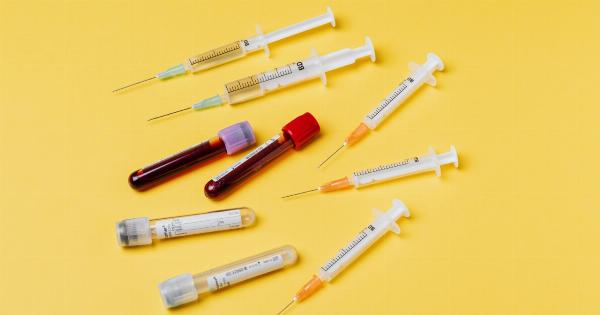Preserved blood refers to blood that has been collected and treated in a way that allows it to be stored for future use.
This process is essential for medical facilities, as it allows them to have a readily available supply of blood whenever it is needed. However, it is important to understand that preserved blood does have a limited shelf life. Over time, the blood can weaken and lose some of its effectiveness.
In this article, we will explore why preserved blood weakens within a brief time period and the implications of this on its usage.
Understanding the Preservation Process
Preservation of blood involves several steps to ensure its longevity. Firstly, the blood is collected from a donor and is carefully screened to ensure it is healthy and free from any infectious diseases.
Once collected, the blood is then processed to separate it into different components such as red blood cells, plasma, and platelets.
The most common method of preserving blood is through refrigeration. The blood is stored in blood banks or specialized facilities at a temperature between 2 to 6 degrees Celsius.
This low temperature helps slow down the degradation process and maintains the integrity of the blood components.
Factors Affecting Blood Shelf Life
Despite the preservation process, blood does have a limited shelf life. Several factors contribute to the weakening of preserved blood over time:.
1. Red Blood Cell Storage Lesion
Red blood cells are the most commonly transfused component of blood. Unfortunately, during the preservation process, red blood cells undergo certain changes known as the storage lesion.
These changes include decreased levels of ATP (adenosine triphosphate), 2,3-DPG (2,3-diphosphoglycerate), and reduced deformability. These changes result in a shorter lifespan of the red blood cells and reduced oxygen-carrying ability.
2. Cellular Metabolic Changes
Preserved blood also experiences metabolic changes over time. The decreased levels of ATP mentioned earlier also affect other cellular processes within the blood components.
These metabolic changes can impact the ability of the blood to deliver oxygen, remove waste products, and regulate immune responses.
3. Biochemical Degradation
Over time, preserved blood undergoes biochemical degradation. Proteins and other biomolecules within the blood can break down or denature, impacting their functionality.
This degradation can affect the coagulation process, immune responses, and overall blood compatibility.
4. Hemolysis
Hemolysis refers to the breakdown of red blood cells, leading to the release of hemoglobin into the plasma. Hemolysis can occur during the preservation process, but it becomes more significant as the storage time increases.
Hemolysis not only reduces the number of viable red blood cells but also releases substances that can be harmful to the recipient if transfused.
5. Microbial Contamination
Despite rigorous screening and storage protocols, there is still a small risk of microbial contamination in preserved blood. Bacterial growth in stored blood can lead to infections and can compromise the overall safety of the transfusion process.
Impact on Blood Transfusion
The weakening of preserved blood has significant implications for blood transfusion procedures:.
1. Reduced Efficacy
As preserved blood weakens over time, its ability to provide effective treatment diminishes. Reduced oxygen-carrying capacity, metabolic changes, and biochemical degradation can lead to suboptimal outcomes for patients who require blood transfusions.
2. Increased Transfusion Reactions
Preserved blood that has undergone significant hemolysis or microbial contamination poses a higher risk of adverse transfusion reactions.
These reactions can range from fever and chills to potentially life-threatening conditions such as transfusion-related acute lung injury (TRALI) or sepsis.
3. Limited Blood Supply
The shelf life of preserved blood determines the availability of blood for transfusions. With a limited shelf life, blood banks must constantly monitor their inventory and rotate their stock to ensure that the available blood is still viable.
This can create challenges in meeting the demands for blood transfusion.
Conclusion
Preserved blood, despite undergoing the necessary preservation processes, weakens within a brief time period.
Factors such as the storage lesion in red blood cells, cellular metabolic changes, biochemical degradation, hemolysis, and microbial contamination all contribute to the weakening of blood over time. These changes can impact the efficacy of blood transfusions, increase the risk of adverse reactions, and pose challenges in maintaining an adequate blood supply.
Understanding the limitations of preserved blood is crucial for healthcare professionals to ensure safe and effective transfusion practices.
























